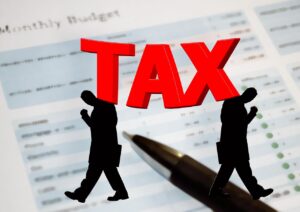Choosing between investment funds like IWLD and VGS can feel a bit like picking between two similar-looking apples. Both aim to give you broad international market exposure, but how they do it, and crucially, how they interact with Australia’s tax system, can make a real difference to your returns. This article breaks down the key tax considerations for Australian investors when comparing IWLD vs VGS, helping you make a more informed decision for your portfolio.
IWLD vs VGS: Structure, Exposure, and Domicile
When looking at international share market exchange-traded funds (ETFs) like iShares World All-Cap ETF (IWLD) and Vanguard MSCI Index International Shares ETF (VGS), understanding their underlying structure, what they invest in, and where they are based is pretty important for us Aussie investors. Both aim to give us a slice of global markets, but they go about it a bit differently.
IWLD, for instance, is designed to track the MSCI World All Cap Index. This means it aims to capture large, mid, and small-cap companies across developed countries. A key feature is its Australian domicile, which can simplify things for us regarding estate taxes. However, it doesn’t include emerging markets. Its management expense ratio (MER) is quite low at 0.09% per annum, but it achieves this by investing in other underlying funds rather than directly holding shares, which can sometimes lead to other costs or complexities.
VGS, on the other hand, tracks the MSCI World ex-Australia Index. This typically covers large and mid-cap companies in developed markets, so it misses out on small caps and emerging markets. Unlike IWLD, VGS is also Australian domiciled, meaning no US estate tax worries for us. Its MER is a bit higher than IWLD’s, sitting around 0.18% annually, but it generally uses a full replication strategy, meaning it buys the actual shares to match the index. This can sometimes be more straightforward from a tax perspective.
Here’s a quick look at some of their differences:
- Domicile: Both IWLD and VGS are domiciled in Australia. This is a plus because it means we don’t have to worry about US estate taxes, which can be a concern with U.S.-domiciled funds. This is a significant point for many Australian investors looking for simplicity.
- Exposure: IWLD aims for a broader market coverage by including small-cap companies in developed markets, whereas VGS typically focuses on large and mid-cap companies in developed markets. Neither includes emerging markets directly.
- Costs: While IWLD boasts a lower headline MER, the actual costs can be influenced by its investment strategy. VGS has a higher MER but often a more direct investment approach.
Choosing between them often comes down to whether you prioritise the broader market exposure of IWLD, including small caps, or the slightly simpler structure of VGS, even with its higher fee. It’s worth comparing these ETFs against others available on the ASX, like those discussed in this analysis of global share ETFs.
Ultimately, understanding these structural differences helps us make a more informed decision about which fund aligns best with our investment goals and tax situation. For a broader comparison of international ETFs, you might find this overview of international exposure helpful.
How Distributions are Handled Under IWLD vs VGS
When you invest in either IWLD (iShares Core MSCI World All Cap ETF) or VGS (Vanguard MSCI Index International Shares ETF), you’ll receive distributions, typically on a quarterly or half-yearly basis. But the way these distributions are managed, taxed, and reported has some important differences that matter for any Australian investor.
The structure of each ETF influences how income is paid out and what kind of tax documentation you receive. Here’s a quick look at the key features:
| ETF | Domicile | Distribution Frequency | Distribution Type |
| IWLD | Australian | Quarterly | Income, capital gains |
| VGS | Australian | Semi-annual | Income, capital gains |
- Both IWLD and VGS pay out distributions in Australian dollars, making it straightforward come tax time.
- Distributions can include a mix of overseas dividends, interest income, and sometimes capital gains; these all get passed on to investors.
- Because both are domiciled locally, you’ll receive Australian tax statements, simplifying your end-of-year reporting.
Choosing between IWLD and VGS for their distributions often comes down to how you prefer your cash flow and your appetite for minor differences in capital gains and income breakdowns. While both are handled in a very user-friendly way for Australians, the quarterly payments of IWLD can be handy if you like more frequent cash flow, whereas VGS’s semi-annual schedule may suit those who aren’t fussed.
Don’t forget—holding either ETF outside of an automated DRP (Distribution Reinvestment Plan) means you’ll need to decide what to do with your payout each time. That said, both funds offer a DRP for those who want to compound returns without manual intervention.
Foreign Income and Withholding Tax in IWLD vs VGS
When you invest in international shares through an ETF like IWLD or VGS, you’re essentially buying into a basket of companies listed on overseas exchanges. These companies pay dividends, and those dividends are considered foreign income by the Australian Tax Office (ATO). This is where things can get a bit tricky with withholding taxes.
The core difference often comes down to the domicile of the underlying funds and how they receive income.
IWLD and VGS are both Australian-domiciled ETFs. This generally means they are structured to be more tax-friendly for Australian investors. However, the way they achieve their global exposure can lead to different outcomes regarding foreign withholding taxes.
- IWLD (iShares Core MSCI World All Cap ETF): This ETF aims to replicate the MSCI World Index. While it’s Australian-domiciled, it often achieves its exposure by investing in other iShares ETFs, which themselves might be domiciled in different regions. This can mean that dividends paid by the underlying companies are subject to withholding tax in their country of origin before they even reach IWLD.
- VGS (Vanguard MSCI Index International Shares ETF): Similarly, VGS tracks the MSCI World ex-Australia Index. It’s also Australian-domiciled. The specific structure and the underlying index it tracks mean that dividends from the companies it holds will also be subject to foreign withholding taxes.
The key consideration here is whether these withholding taxes can be claimed back or offset against your Australian tax liability. For Australian-domiciled ETFs that hold US-listed securities, there can be a withholding tax applied to dividends paid by US companies. While the US has a tax treaty with Australia, which usually means a reduced withholding rate on dividends, it’s not always a complete exemption. For non-US companies, the withholding tax rates vary by country.
It’s worth noting that some ETFs, particularly those domiciled in the US (like VTS or VEU, which are sometimes used as alternatives), can have a ‘tax drag’ associated with them. This drag is often due to how they handle foreign income and withholding taxes, and it can reduce your overall returns. Australian-domiciled ETFs like IWLD and VGS are generally designed to minimise this tax drag for Australian investors.
The impact of foreign withholding tax is often baked into the ETF’s net return. While you might not see it as a direct deduction on your statement, it’s a cost that reduces the amount of dividend income received before it gets to you. For Australian investors, the ATO does allow for foreign income tax offsets for taxes paid overseas, but the specifics can depend on the tax treaties in place and the structure of the ETF.
Franked Dividends: Do IWLD vs VGS Provide Them Equally?
When we talk about franked dividends in Australia, it’s a bit of a unique system. Basically, it means that the tax a company has already paid on its profits is passed on to shareholders, so you don’t get taxed twice on that same income. It’s a way to avoid double taxation. Now, when you’re looking at ETFs like IWLD and VGS, which invest in companies all over the world, the situation with franking credits gets a bit complicated.
Neither IWLD nor VGS directly provides franked dividends to Australian investors because they primarily hold shares in companies listed on overseas exchanges, and these companies don’t operate under the Australian imputation system.
Here’s a breakdown of what that means:
- IWLD (iShares Core MSCI World All Cap ETF): This ETF tracks the MSCI World Index, which covers large and mid-cap stocks in developed countries. While it’s Australian domiciled, the underlying companies it invests in are not Australian. Therefore, any dividends paid by these international companies are generally unfranked from an Australian tax perspective.
- VGS (Vanguard MSCI Index International Shares ETF): Similar to IWLD, VGS focuses on developed markets globally, excluding Australia. It also holds shares in companies that are not subject to Australia’s imputation system. Consequently, dividends received through VGS are typically unfranked.
For Australian investors, the absence of franking credits from these international ETFs means that the dividends received will be taxed as ordinary income at their marginal tax rate, without the benefit of the franking credit reduction. This is a key difference compared to investing in Australian shares or Australian-domiciled ETFs that hold Australian shares, where franking credits can significantly reduce the overall tax liability.
So, if you’re looking for the tax advantages that franking credits offer, you’d need to consider Australian-domiciled investments that hold Australian companies. IWLD and VGS are designed for broad international exposure, and the tax treatment of their distributions reflects their global investment focus.
Capital Gains Tax Implications When Selling IWLD vs VGS Shares

When you sell shares in either IWLD or VGS, you’ll need to consider Capital Gains Tax (CGT). This tax applies to the profit you make from selling an asset. The amount of CGT you pay depends on your individual income tax rate and how long you’ve held the asset.
For assets held for more than 12 months, you’re eligible for a 50% CGT discount. This means only half of your capital gain is added to your assessable income for the year. If you sell within 12 months, the full capital gain is taxed at your marginal rate.
Both IWLD and VGS are Australian-domiciled ETFs. This is generally good news from a tax perspective because it means you won’t typically face the complexities of the US estate tax, which can apply to US-domiciled funds. However, the underlying holdings and how they are managed can still influence your CGT position.
The way an ETF replicates its index can impact the frequency of internal trades. More frequent trading can lead to more realised capital gains within the fund, which might then be distributed to unitholders. While Australian-domiciled ETFs are designed to minimise these distributions, it’s something to be aware of.
When you sell units in IWLD or VGS, you’ll need to calculate your capital gain or loss. This is generally the selling price minus the cost base (which includes the purchase price and any associated transaction costs). You’ll then report this on your tax return.
Here’s a simplified look at the process:
- Calculate the Capital Gain/Loss: Selling Price – Cost Base = Capital Gain or Loss.
- Apply the CGT Discount: If held for over 12 months, halve the capital gain.
- Add to Assessable Income: The resulting amount is added to your income for the financial year.
It’s important to keep good records of all your transactions, including purchase dates, prices, and sale details, to accurately calculate your CGT liability.
Tax Statements & Reporting Obligations for IWLD vs VGS Investors
When you invest in either IWLD or VGS, you’ll receive tax statements that help you report your investment income and capital gains to the Australian Taxation Office (ATO). These statements are pretty important for getting your tax return sorted correctly.
Both IWLD and VGS, being Australian-domiciled Exchange-Traded Funds (ETFs), generally provide straightforward tax information. You can expect to receive an annual tax statement, typically around July or August, detailing your distributions. These distributions usually include dividends and sometimes realised capital gains.
Here’s a general breakdown of what you’ll typically find on these statements:
- Dividend Income: This will show any dividends paid out by the underlying companies held within the ETF. For Australian investors, this often includes franked dividends, which come with a franking credit. You’ll need to report the grossed-up dividend amount and the franking credit separately.
- Capital Gains Distributions: ETFs can distribute realised capital gains when they sell underlying assets for a profit. These are usually reported as a net capital gain, and you’ll be eligible for the 50% CGT discount if you’ve held the ETF for more than 12 months.
- Foreign Income: Since both ETFs invest internationally, you’ll also see details of any foreign income received. This is important because foreign income is taxed differently and may have had foreign withholding tax applied at the source.
The key difference in reporting often comes down to the specific tax components of the distributions. While both ETFs aim to track global indices, the way they achieve this (e.g., through direct shareholdings or underlying funds) can slightly alter the breakdown of income and capital gains reported on your statement.
It’s worth noting that if you reinvest your distributions through a Distribution Reinvestment Plan (DRP), the reinvested amount is still considered a distribution for tax purposes in the year it’s made. You’ll need to report it even though you didn’t receive it as cash. This is a common feature for Australian-domiciled ETFs like IWLD and VGS, making portfolio growth more automatic. For a deeper look into how ETFs work in Australia, you can explore how ETFs are revolutionising investing.
Keeping these tax statements organised is vital. They form the basis of your tax return, and accurate reporting helps avoid any unnecessary attention from the ATO. If you’re unsure about any aspect of your ETF tax reporting, consulting with a qualified tax professional is always a good idea.
Tax Efficiency and ‘Tax Drag’ in IWLD vs VGS
When we talk about tax efficiency in ETFs, we’re really looking at how much of your investment return gets eaten up by taxes before it even hits your pocket. This is often called ‘tax drag’. It’s a bit like a leaky tap, slowly draining away your hard-earned gains over time.
One of the main things that causes tax drag, especially with international ETFs, is where the ETF is actually based (its domicile) and how it holds its underlying investments. For Australian investors, this is a pretty important detail.
- US-Domiciled ETFs: These ETFs are registered in the US. While they might offer some advantages, like potentially lower management fees or different investment strategies, they can also bring extra tax complexities. For instance, you might have to deal with US estate tax implications and the need to regularly update forms like the W-8BEN. If you don’t keep these forms up-to-date, you could face a higher withholding tax on dividends. Some sources suggest that US-domiciled ETFs can be more tax-efficient due to how they handle capital gains, potentially adding around 0.5% to after-tax returns compared to Australian-domiciled equivalents.
- Australian-Domiciled ETFs: ETFs like IWLD and VGS are based here in Australia. This generally means they are simpler for us to manage from a tax perspective. You typically avoid the US estate tax issues, and the reporting is usually more straightforward, aligning with our local tax system. However, the way they are structured might mean they pass on more capital gains to investors, which then become taxable events for you.
The structure of how an ETF holds its assets can also impact tax drag. For example, if an Australian ETF buys units in a US-domiciled ETF to gain its international exposure, it can create a ‘tax drag’ similar to holding the US ETF directly. This is because the Australian ETF might receive income from the underlying US ETF, and that income could be subject to foreign withholding taxes before it even gets to the Australian ETF manager.
Understanding the underlying holdings and the domicile of your ETF is key to minimising tax drag. While some ETFs might boast lower headline fees, the hidden tax costs can sometimes outweigh these savings for Australian investors.
When comparing IWLD and VGS, both are Australian-domiciled, which is a good start for tax efficiency. However, the way they achieve their global exposure can differ. IWLD, for instance, uses underlying US-domiciled funds to build its portfolio. This structure, while keeping management costs low, can introduce some of that tax drag we’ve been talking about. VGS, on the other hand, might have a slightly higher management fee but could potentially have less tax drag due to its direct investment approach in international shares. It’s a bit of a trade-off between upfront costs and potential hidden tax expenses. For a deeper look at how these structures work, you might find information on AI risk assessment helpful in understanding complex financial mechanics.
Which Australian Investor Profiles Benefit More from IWLD vs VGS from a Tax Perspective

When we look at IWLD and VGS, figuring out who benefits more tax-wise really comes down to a few key things. It’s not a one-size-fits-all answer, you know? For someone just starting, maybe with a smaller amount to invest, the differences might not feel huge. But as your portfolio grows, or if you’re thinking long-term, these tax details can start to add up.
Investors who prioritise simplicity and want to avoid potential US estate tax complications will likely find Australian-domiciled ETFs like VGS and IWLD more straightforward. This is because they are structured specifically for Australian investors, meaning you don’t have to worry about the extra paperwork or potential penalties associated with US-domiciled funds. For example, US-domiciled funds often require you to fill out a W-8BEN form every three years to avoid a higher withholding tax rate, and if you forget, you could be hit with an extra 15% tax. Plus, changes in US tax law could impact you down the track.
Here’s a quick breakdown of who might lean towards which:
- IWLD: This ETF is a good option if you’re looking for broad global diversification, including smaller companies, and want to keep costs low. Its Australian domicile means no US estate tax worries. However, it’s a bit smaller than VGS, so the buy-sell spread can be wider, which might eat into your returns a bit.
- VGS: VGS offers exposure to large and mid-cap companies in developed markets. It’s also Australian-domiciled, so no US estate tax issues. While its management fee is a bit higher than IWLD’s, it’s a more established fund with larger assets, which usually means tighter spreads when you trade.
For those who are particularly sensitive to management fees, IWLD’s lower expense ratio is attractive. However, it’s important to weigh this against the potential impact of wider bid-ask spreads due to its smaller size. The tax implications of holding US-domiciled ETFs, like VTS/VEU, are often cited as a reason to favour Australian-domiciled options, even if the management fees are slightly higher.
Ultimately, if you’re aiming for a simple, tax-efficient setup and want to steer clear of any potential cross-border tax headaches, sticking with Australian-domiciled ETFs like IWLD or VGS makes a lot of sense. The choice between them often comes down to whether you prioritise the absolute lowest management fee (IWLD) or the benefits of a larger, more liquid fund (VGS), while both offer that crucial Australian domicile.
Frequently Asked Questions
What’s The Main Difference Between IWLD and VGS for Australian Investors?
IWLD and VGS are both exchange-traded funds (ETFs) that let you invest in companies outside of Australia. IWLD includes small companies from developed countries, while VGS focuses on larger and medium-sized companies in developed countries. Both are based in Australia, which avoids some tax headaches that can come with U.S.-based funds.
How Do These ETFs Handle Dividends And Taxes?
When these ETFs pay out profits (dividends), the way they’re taxed in Australia can differ. Some ETFs might pass on ‘franking credits’ from Australian companies, which can reduce your tax bill. However, for international ETFs like IWLD and VGS, the focus is more on how foreign taxes are handled and whether the ETF itself incurs extra taxes before reaching you, which can impact your overall return.
Are There Any Tax Advantages To Choosing One Over The Other?
Generally, Australian-domiciled ETFs like IWLD and VGS are designed to be tax-friendly for Australians. They aim to minimise ‘tax drag,’ which is extra tax paid due to how the fund is structured or managed. While both are good options, the specific way they manage their investments can lead to slight differences in tax efficiency over time.
What Happens To My Taxes When I Sell Shares In IWLD or VGS?
When you sell shares in an ETF, you might make a profit or a loss. This profit is subject to Capital Gains Tax (CGT) in Australia. You get a discount on CGT if you’ve held the ETF for more than 12 months. The specific tax treatment is similar for both IWLD and VGS, as they are both Australian ETFs.
Do I Get Any Special Tax Documents From These ETFs?
Yes, at the end of the financial year, you’ll receive tax statements from your broker that summarise the income and capital gains distributions from your IWLD and VGS investments. You’ll use this information to complete your tax return, reporting these amounts to the Australian Taxation Office (ATO).
Which Type Of Investor Might Prefer IWLD Or VGS From A Tax Viewpoint?
Australian investors who want broad international exposure without the complexities of US-domiciled funds often find IWLD and VGS appealing. They are particularly good for those who want to keep their tax reporting straightforward and benefit from Australia’s tax rules for investments held within the country.











